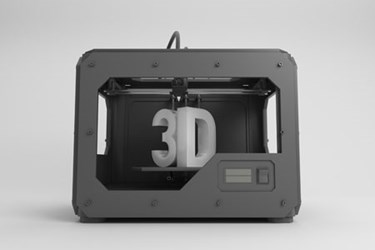3D Printing: Reducing The Risk In Training Pediatric Surgeons
By Megan Williams, contributing writer

All solutions providers should be paying attention to the 3D printing market. While it may be easy to write off the innovations as not pertaining to your corner of the healthcare world, the market has endless potential. The printing technology brings with it opportunity in software creation, assembling the printers themselves, accessories around the devices, even recycling the printed goods after they’re no longer in use (as would be the case for short-term goods like casts and braces).
It doesn’t stop there, though.
According to a press release from Northwestern University, 3D printed models are being used to answer a very difficult question around training pediatric surgeons — how do you learn how to operate on the chest cavity of newborns (which are the size of an egg) without practicing on live patients?
Up until now, most were being trained in the operating room, where the cost of their learning curve was high. Dr. Katherine Barsness, MD, ’11 MS, in response, has created life-sized, reusable models of newborn ribcages in a partnership with engineers from Feinberg’s Innovations Lab and the McCormick School Of Engineering and Applied Sciences.
The models are produced with 3D printers, resulting in plastic ribcages that are anatomically correct replicas of infant chest cavities, which are then covered with a synthetic silicone skin and filled with tissue.
The models are used in the Northwestern Simulation training facility, where students practice performing minimally invasive procedures intended to repair rare birth defects.
Different Surgeons, Different Models
Because of the flexibility of 3D printing, different models are created based on training needs. Beginners use printed plaster molds to create silicon organs that are placed in the ribcage. Advanced surgeons use fetal bovine tissue (that is surgically modified to mimic congenital defects) that would have been thrown out by commercial slaughterhouses. This is especially helpful in the treatment of rare conditions, because without the models, new surgeons would have to wait for training based on patient incidence, and even experienced surgeons could fall out of practice.
Broader Use
Dr. Barsness believes that her 3D printing-based approach will eventually become standard for training surgeons, though she acknowledges some difficulties around the concept: “First is dedicated time for education outside the operating room. We need programs to let their trainees leave clinical duties for dedicated simulation-based education. Second, there are very few pediatric surgeons in the world who are trained to conduct this type of education.”
Additionally, finances are a challenge. While the materials for a printed ribcage cost around $200, the printers, and the resources around them, can be a significant hurdle for your client.
Recommended Reading
For advice on selling 3D printers in different verticals, read this article on the topic.
